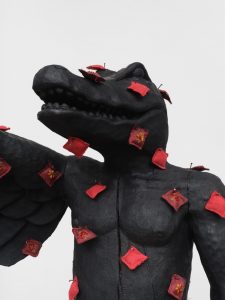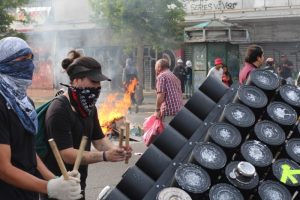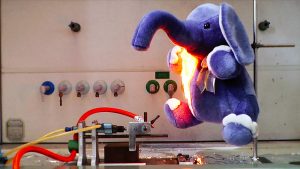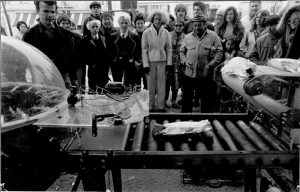Martin Bricelj Baraga and Olaf Bender, NEUNUNDNEUNZIG (99)
NEUNUNDNEUNZIG (99) is a kinetic sound sculpture by Martin Bricelj Baraga and Olaf Bender (raster-noton).
The work takes the shape of a matrix of 99 balloons that inflate individually to surround visitors in a physical, sonic, and visual experience. The piece inhales and exhales, expands and deflates, building up an almost claustrophobic experience that aims to echo the crises and dilemmas our society is going through.
And if you’re a child of the 80s, you might even guess that the title and use of balloons evoke “99 Luftballons”, Nena’s hit single that talked about innocent objects that provoke nuclear paranoia.
Nena, 99 Luftballons, 1984
NEUNUNDNEUNZIG (99) will be shown this week in Paris as part of the International Biennial of Digital Arts NEMO. The biennial is associated with SHAPE, a European platform for innovative music and audiovisual art that has such an impeccable and experimental taste for sound art that wmmna became one of their media partners. But back to Olaf and Martin! They spent the weekend inflating balloons and adjusting pipes but still managed to find some time to answer my questions:
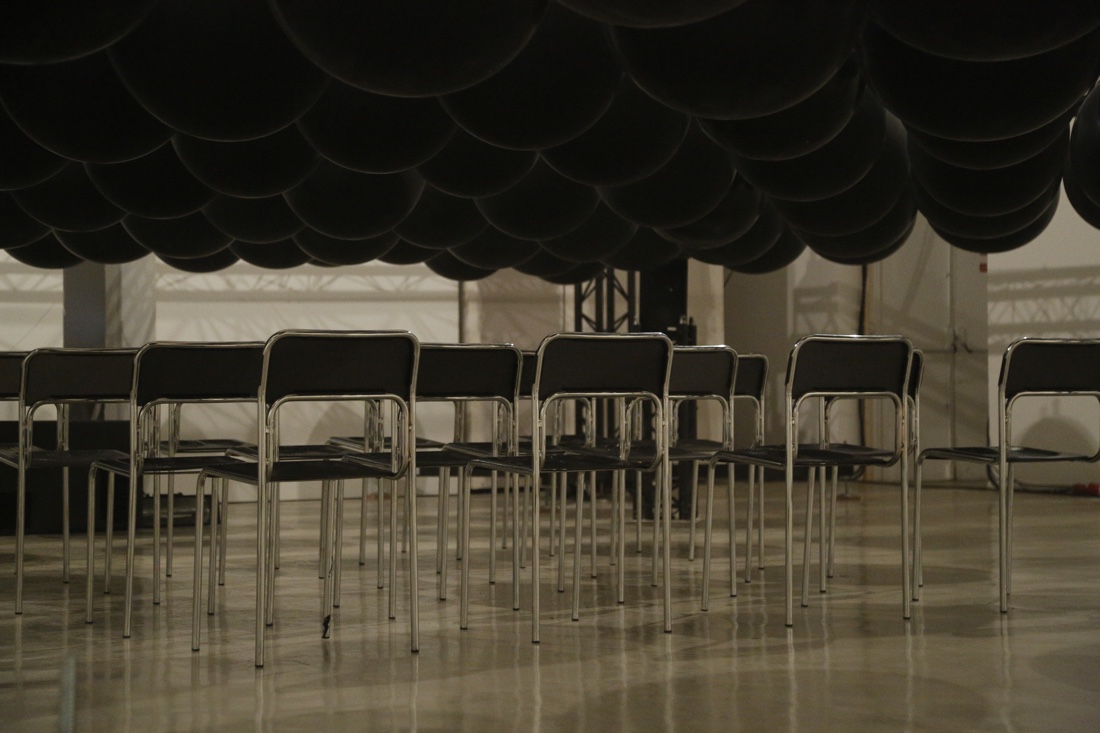
Hi Martin and Olaf! How did you two start working together? How do your respective practices and interests complement each other?
Bender: We met some years ago during diverse festivals and one day Martin introduced me to some of his projects that I found interesting because they all had something subversive and weren’t that super seriously arty, but had rather something simple, an energy that reminded me of something I knew from rock music, a kind of non-conformist attitude. (projects: Nonument, Re:Museum, New Human.) But to be clear about our current collaboration, my part in it is that I added the sound to the 99 installation which had already been conceptualized by Martin before.
Baraga: When I work on open air intervention or indoor installation I am mostly interested in the space and the ambience of light and sound and how all this affects the space alone, and the visitor. So sound is very important – I’m interested in the sound of spaces and of objects- objects producing sounds, becoming some sort of instrument. Olaf is interested in physicality of sound, so I think these 2 things match.
It’s interesting that Olaf mentions the simple energy because I had the same feeling when I experienced his music- the kind of raw power, that I really wanted this piece to have in.
Beside that – the song NEUNUNDNEUNZIG (99) is about cold war- the east/west block, and we both come from different countries but from the same former eastern block.
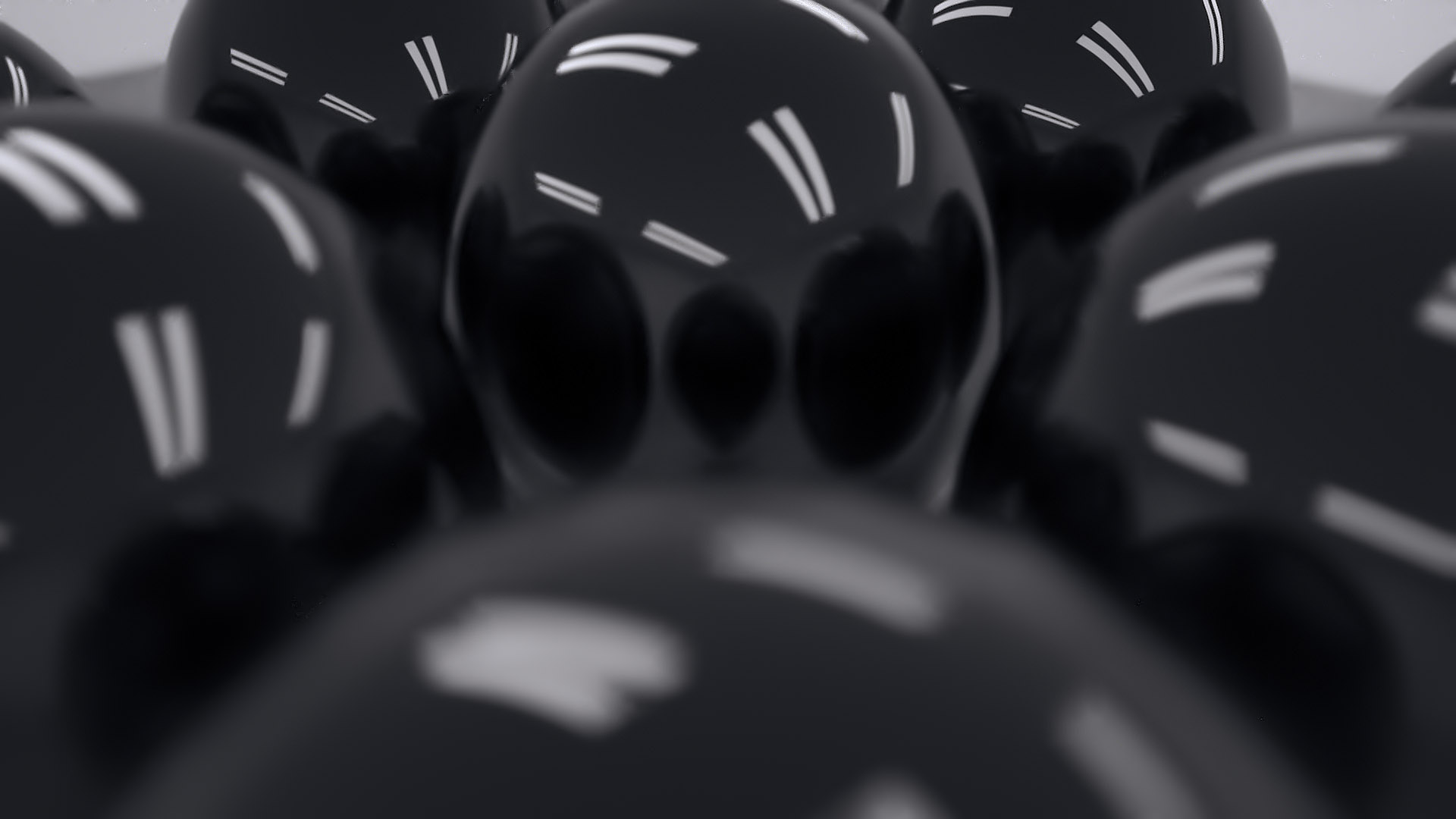
The description of the piece states that the space is “shrinking and extending, thus creating a highly intensive, even claustrophobic psycho-physical and socio-spatial experience that mirrors the current conditions of our society.” Could you give us more details about the experience? What will visitors see and feel?
Bender: I wouldn’t say that the room is shrinking and extending, for me it’s more like breathing. From an abstract perspective, the setup of the balloons acts like an organism. The initial idea was that visitors enter this organism in the darkness and a part of the scenario should be this claustrophobic experience that you always encounter if you give up control to a complex mechanisms (airplane, army, elevator etc.).
Baraga: Exactly – you enter the grid that really functions as an organism- and it looks like an organism too. It looks like a set of cocoons of the future bodies to be born, all connected to their base- pneuma – mother. You are seated in total darkness and start to hear, feel the initial breathing part. The intensities that follow can bring up different reactions.
The grid and the organism are allegories of the system. And we do have organic connections with machines already, we’re being transformed slowly. And what happens when the machines get weird. Or just play their own game. It already happens on a daily basis. As for the breathing of pneumatics- Pneuma – the greek word for breath was very important in Judaism and Cristianity in religious context, meaning spirit or soul.
Do machines that breathe have soul?
How long does it take to get the full immersive experience?
It’s an intimate experience for 15 minutes with 15 other visitors. The current 99 composition actually lasts for 15 minutes, but it takes more time with the whole procedure to enter the room, to be seated, so in a way we can do maximum 2 shows per hour.
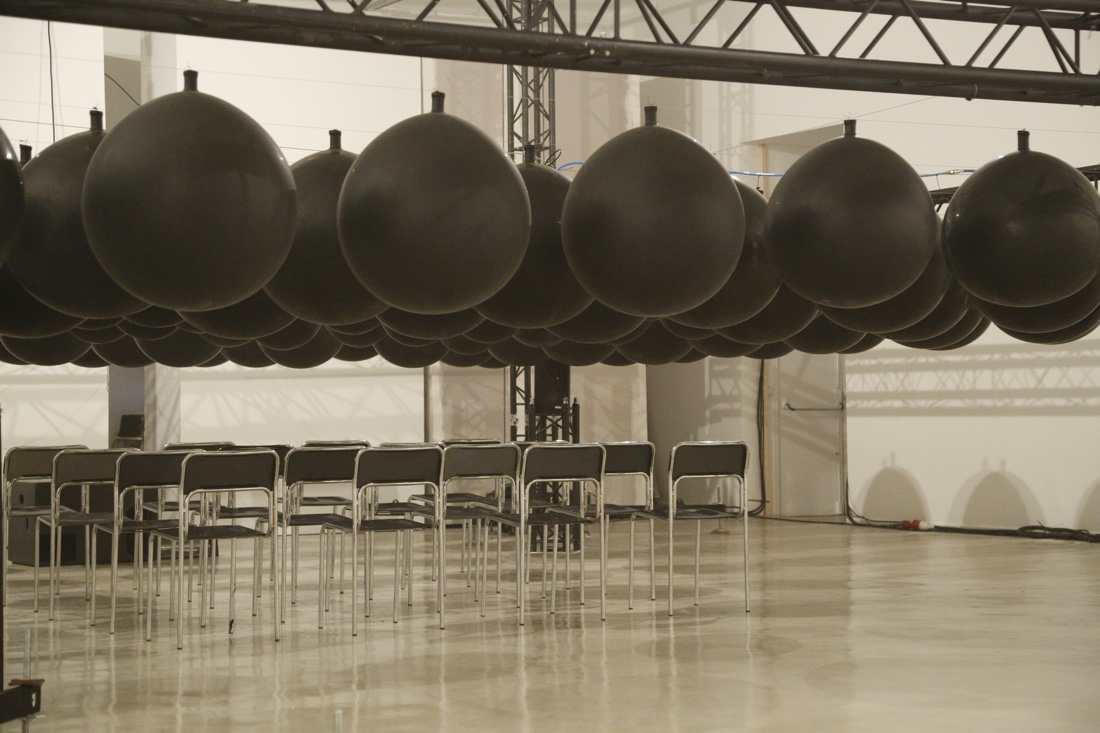
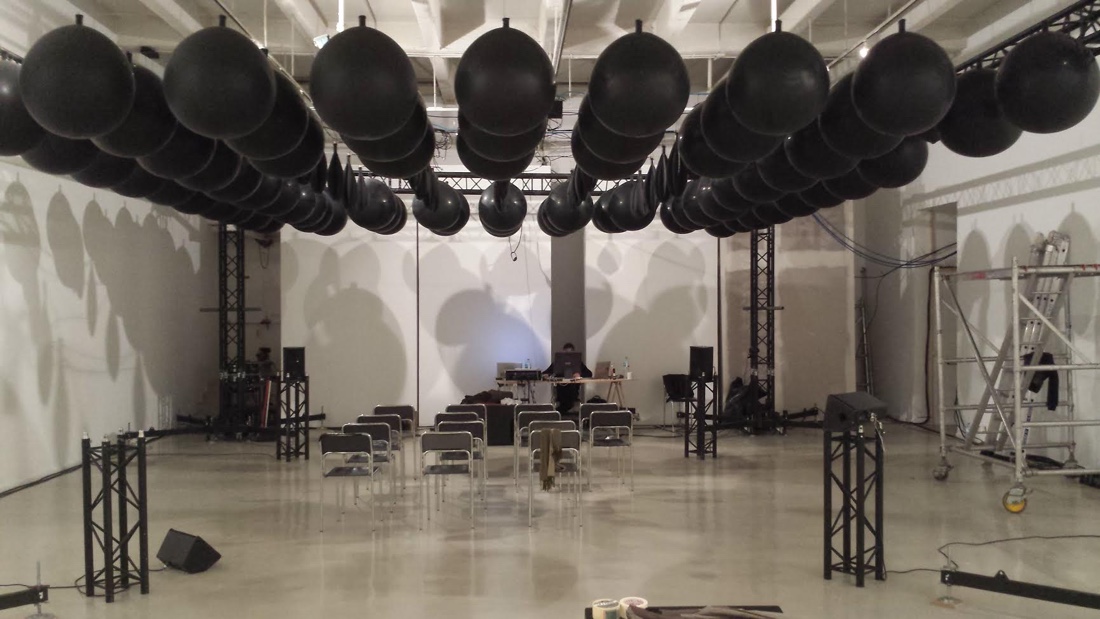
Why was it important for you to communicate a feeling of claustrophobia (as opposed to a light and entertaining experience?
Baraga: It is a reflection of the current state we’re in as humans, the technocratic environment that is becoming so sophisticated that it seems that no change is possible – it’s becoming almost suffocating. That is a very claustrophobic feeling i think.
In creating a total darkness, I’m interested in creating a zone environment where you don’t have a constant influx of information and distractions which you are always exposed to.
Bender: For me, a claustrophobic feeling is important as it is something that signalizes a human being that a certain system has a big potential for danger. I don’t see it in opposition to a light and entertaining experience, even positively acting systems can create this strange feeling if they become totalitarian.
Could you talk about the sound too? How does it evolve along with the kinetic experience?
Bender: The sound is split into three parts. the first part is a high-frequency, the second part a low-frequency theme and the third is more aggressive through mid-range frequencies that interact more and more with the pneumatics before everything collapses.
Baraga: I think the most interesting part of NEUNUNDNEUNZIG (99) is that apart from the fact that it is a constructed environment, it acts as an instrument.
You have the breathing part- the inhaling and exhaling sounds. Then you have the metal mechanical sounds of the valves- when they are opening on and off, that is very beautiful- at the end they get a kind of mechanical insect sound. Below that is the sound design that Olaf did – from almost inaudible high frequencies to very powerful drones with rich details.
What were/was the biggest challenge(s) you encountered while developing NEUNUNDNEUNZIG (99)?
Baraga: When I started working on this project the idea was to build something simpler than the previous big installations I did. You just pack the 99 baloons, the pipes and hop on a plane, right? But pneumatics are one of most complicated systems to use, because it is so non-exact, it is really hard to control. So the technical rider up is a very demanding one- it is almost impossible to get the same compressors in each country due to different standards.
It’s a very complicated sound set up too, because the experience totally changes depending on the space we enter. When we did the latest composition at MoTA Museum in Ljubljana, everything worked and when we arrived at the Galerie Fernand Leger we had to change so many parameters to have everything fit the room. So it’s definitely not a plug and play piece.
Bender: It’s still a work in progress and there are certain factors to be optimized. The physical power of the compressors, for example, is a problem, so the balloons are limited regarding speed and precision. From my musical perspective, I wished to have a more direct connection between the pneumatic and the acoustic system because they have the same physical base.
Apart from its title, has the piece anything else to do with Nena’s protest song?
Bender: My first association with 99 was not so much connected to Nena’s protest phase, it was more connected to something military or science-fiction scenarios like in 1984 or Fahrenheit 451.
Baraga: I would say Nena’s song is a starting point. The formal part- grid of 99 baloons comes from there- but in reverse sense, these balloons don’t bring hope, instead they act as a suffocating grip. The intensities of the blocks or the logic of polarization of the world are facts which seem so powerful you cannot escape them. But it is not just about the cold war, which seems so hot now. You could have a references to past, present or future torture rooms, to the drone strikes, to the NSA, etc.
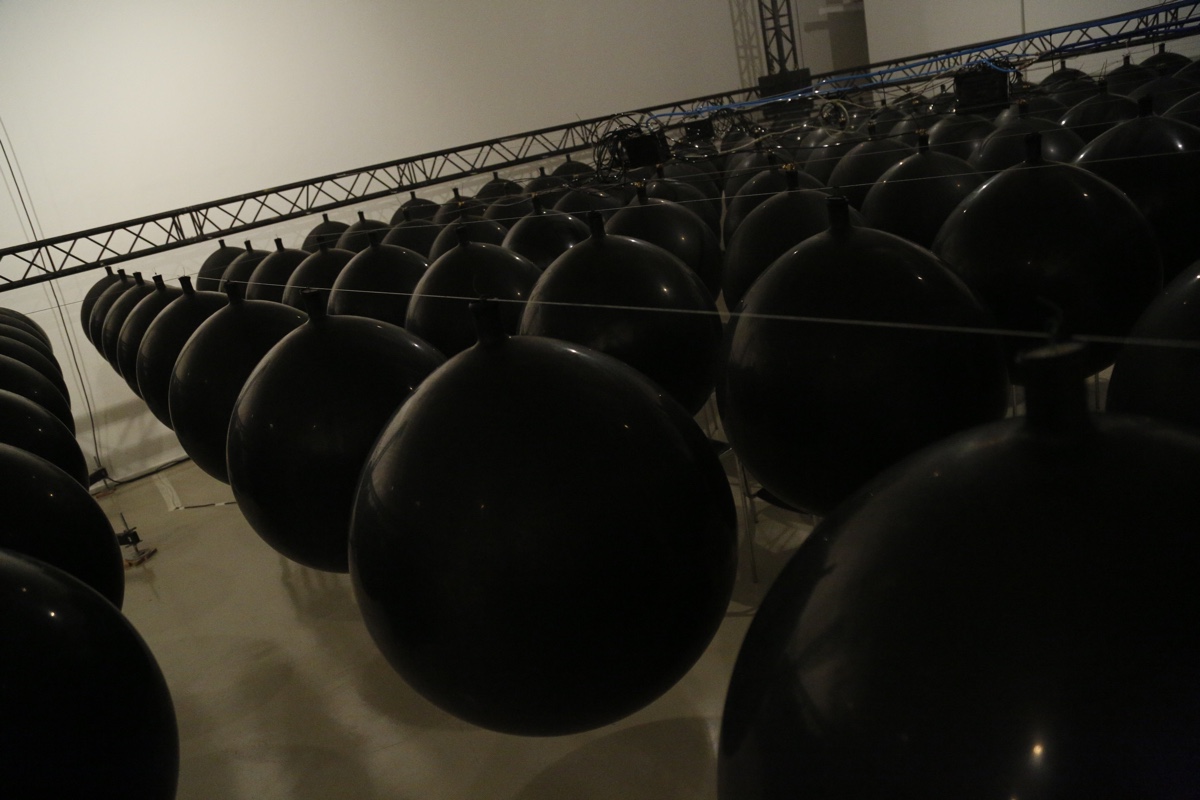
What’s next for you Baraga and Bender? Any upcoming event, project, field of research?
Baraga: We discussed few things – a public space projects with architectural elements like containers and another project with socio realist monuments of Europe.
But for now we really want to develop the balloons into much simpler version too. The one where you control the technical set up and sound more easily in a more controlled environment. Where the spectator looks at the object from outside- not being a part of it- the traditional way seems interesting for this new piece in this moment.
Thanks Martin and Olaf!
Martin Bricelj & Olaf Bender are showing NEUNUNDNEUNZIG (99) at the Galerie Fernand Léger, in Ivry, Paris. The show opens tonight and will continue until the 29th. The event is part of the NEMO Biennale, the International Biennial of Digital Arts which runs until the 31st of January 2016.
All images courtesy of the artists.

